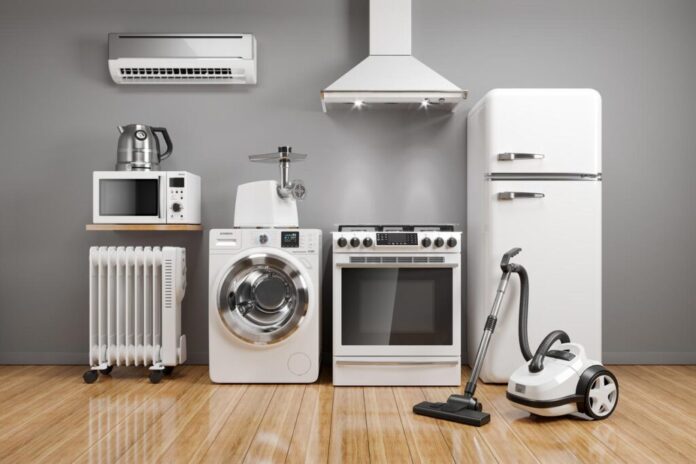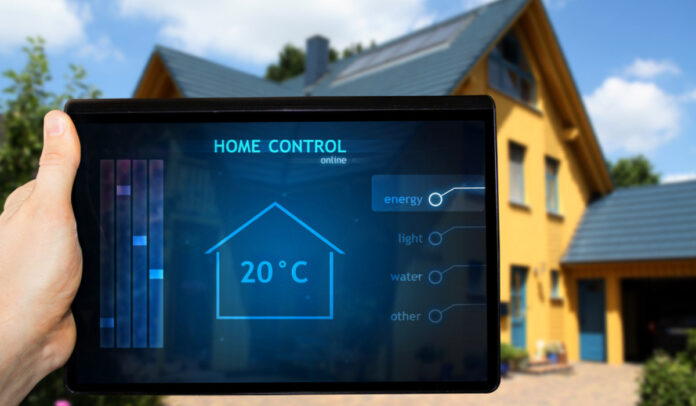A home warranty plan is a service contract that covers the repair or replacement of major home systems and appliances. Think of it as a safety net for unexpected breakdowns that can otherwise be costly. Unlike homeowners insurance, which covers damages from incidents like fire or theft, a home warranty focuses on the wear and tear of household items.
What’s Typically Covered?
While the specifics can vary between providers, most home warranty plans include coverage for the following key areas.
1. Major Appliances

Most home warranty plans cover essential appliances. These often include:
- Refrigerators: This includes the main fridge but may exclude secondary units. Keeping your primary refrigerator in working order is crucial for food storage and safety. Secondary units, such as those in garages or basements, might require additional coverage.
- Ovens and Stoves: Both gas and electric models. Reliable cooking appliances are vital for daily meal preparation. Having a warranty can save you from the inconvenience and high costs of repairs.
- Dishwashers: Essential for those who rely on this modern convenience. Dishwashers help save time and maintain hygiene in the kitchen. A covered dishwasher ensures you won’t be stuck washing dishes by hand.
- Microwaves: Typically built-in units, not countertop models. Built-in microwaves are often more expensive to repair or replace. Warranties covering these units can provide peace of mind for quick meal preparation needs.
- Washers and Dryers: Both can be a significant expense if they break down. Laundry appliances are critical for maintaining clean clothes and linens. Coverage helps avoid the hassle and expense of laundromats or emergency replacements.
2. Home Systems

Source: housing.com
Beyond appliances, home systems are a big part of what home warranties cover:
- HVAC Systems: Heating, ventilation, and air conditioning systems are crucial for home comfort. These systems are often costly to repair or replace, making coverage highly beneficial. Properly functioning HVAC systems are essential for maintaining a comfortable indoor climate year-round.
- Plumbing Systems: This includes leaks, pipe breaks, and sometimes even water heaters. Plumbing issues can cause significant water damage and inconvenience. Coverage ensures timely repairs and can prevent minor issues from becoming major problems.
- Electrical Systems: Covers wiring, fuse boxes, and sometimes major electrical appliances. Electrical issues can pose safety risks and disrupt daily life. Home warranty coverage helps address these problems quickly and efficiently.
3. Optional Add-Ons
Many home warranty providers offer add-ons for an extra fee. These might include:
- Pool and Spa Equipment: Heaters, pumps, and filters. Pools and spas require regular maintenance and can be expensive to repair. Adding this coverage can help keep your backyard oasis in top condition.
- Well Pumps: Essential for homes relying on well water. Well pump failures can disrupt your water supply and require costly repairs. Coverage ensures that any issues are promptly addressed without financial strain.
- Septic Systems: Coverage for septic tanks and related systems. Septic system problems can lead to unpleasant and expensive repairs. A warranty can help manage these issues smoothly and protect your property from damage.
What’s Typically Not Covered?

While home warranties are comprehensive, they do have exclusions. Understanding these can prevent surprises when you need a repair.
1. Pre-Existing Conditions
Any issues that existed before the warranty coverage started are usually not covered. It’s important to disclose any known problems when purchasing a plan. Regular inspections can help identify and address issues before they become costly exclusions.
2. Improper Maintenance or Installation
So, if your gadget or setup wasn’t taken care of or put in right, don’t be shocked when the warranty doesn’t save you. Keeping things in shape regularly is the trick to making sure your stuff keeps working. And yeah, getting a pro to install it is pretty much essential if you don’t want to kiss that warranty goodbye.
3. Cosmetic Damages
So, don’t expect them to cover dents or scratches. Home warranties care about whether things work, not how they look. Keeping your stuff looking good? Yeah, that’s on you.
4. Non-Essential Items
Certain items, often deemed non-essential, are generally excluded:
- Garage Doors: Often excluded unless part of a specific add-on. Garage doors can be costly to repair, so check your plan for possible add-ons. Regular maintenance can help extend the life of your garage door system.
- Sprinkler Systems: Most plans do not cover lawn and garden systems. Sprinkler systems require regular upkeep to function properly. Consider additional coverage if your lawn relies heavily on automated watering.
- Secondary Appliances: Items like wine coolers or secondary refrigerators are usually not covered unless specified. If you have specialized or secondary appliances, consider additional coverage. These items can be expensive to repair and might not be essential for everyday use.
Coverage Limits

Home warranty plans often have coverage limits, meaning they will only pay up to a certain amount for repairs or replacements. Make sure you understand these limits, as they can vary significantly between providers and plans. Knowing your limits can help you budget for potential out-of-pocket expenses.
Service Fees
When you need a repair, expect to pay a service fee. This fee is similar to a co-pay in health insurance and can range from $50 to $125 per service call. Be aware of the fee structure to avoid surprises when scheduling a repair.
Claim Caps
Some plans place caps on the total amount you can claim within a year. For instance, you might have a $2,000 cap on HVAC repairs annually. Once you hit that cap, you’re responsible for any additional costs. Understanding these caps can help you prioritize repairs and manage your budget effectively.
How to Choose the Right Home Warranty Plan

Here are some essential tips to guide you in choosing the best home warranty plan for your home.
1. Assess Your Needs
Evaluate which systems and appliances are most crucial for your household. If you have an older HVAC system, ensuring it’s covered might be a priority. Consider the age and condition of your appliances to determine the level of coverage you need.
2. Compare Plans
Look at multiple providers and compare their offerings. Pay attention to what’s included in the base plan versus what’s offered as an add-on. Comparing plans can help you find the best value and coverage for your specific needs.
3. Read Reviews
Customer reviews can provide insights into a company’s reliability and customer service quality. Look for reviews that discuss the claim process and satisfaction with coverage. Real-life experiences from other customers can guide your decision-making.
4. Understand the Terms
Carefully read the contract terms, including exclusions, caps, and service fees. Ensure you fully understand what you’re signing up for. Don’t hesitate to ask for clarification on any confusing terms or conditions.
5. Ask Questions
Don’t hesitate to contact providers with questions. Clarifying details before committing can prevent misunderstandings later. A good provider will be transparent and willing to address your concerns.
Common Misconceptions

When it comes to home warranties, many homeowners have misunderstandings about what these plans can and cannot do. These misconceptions can lead to unrealistic expectations and frustration when issues arise.
“It’s the Same as Homeowners Insurance”
Homeowners insurance and home warranties serve different purposes. Insurance covers damage from unexpected events like fire or theft, while warranties cover wear and tear on appliances and systems. Understanding the difference can help you see the value in having both.
“Everything in My Home is Covered”
Home warranties have limitations and exclusions. Not every repair will be covered, so it’s essential to know what’s included. Reviewing your policy can help you avoid frustration and plan for potential out-of-pocket expenses.
“All Home Warranty Companies Are the Same”
Coverage, service quality, and terms can vary widely between companies. Research is crucial to find a plan that suits your needs. Taking the time to compare providers can lead to better service and more comprehensive coverage.
“I Don’t Need Maintenance If I Have a Home Warranty”
Proper maintenance is still necessary. Neglecting maintenance can void your warranty and lead to denied claims. Regular upkeep helps ensure your appliances and systems are in good working order and covered by your warranty.
In Summary
Home warranties are supposed to give you peace of mind by covering those random repair and replacement costs for big-ticket items like home systems and appliances. They’re especially handy if your house is older and things are more likely to fall apart. But, let’s not kid ourselves—figuring out what’s actually covered and what’s not is key if you don’t want any nasty surprises.







